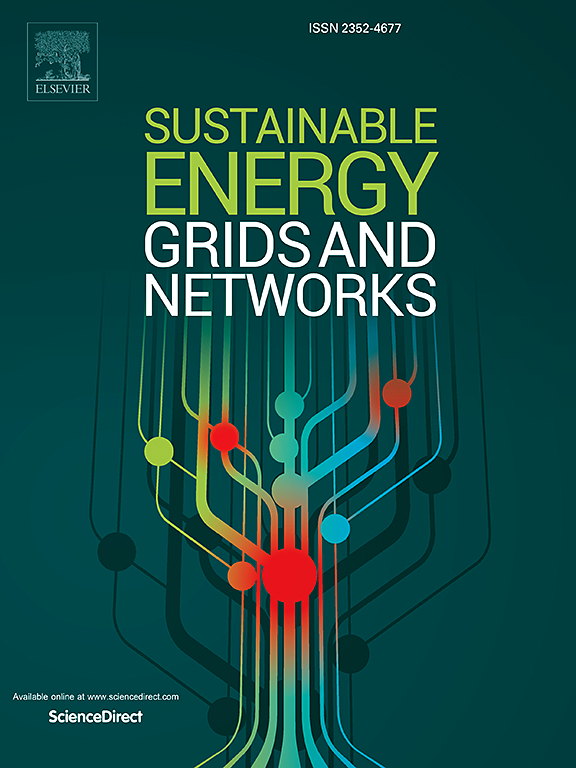Network-aware MILP model for scheduling multi-energy systems considering carbon emissions and customers’ satisfaction: A DRCC approach
IF 4.8
2区 工程技术
Q2 ENERGY & FUELS
引用次数: 0
Abstract
The rapid growth of multi-energy systems (MESs) with electricity, natural gas, and heat generations and conversions necessitates efficient management frameworks to harness the offered flexibility by the system components. This paper proposes a mixed-integer linear programming (MILP) model to optimally manage a MES equipped with electric vehicle (EV) charging stations, combined heat and power (CHP) units, renewable energy sources (RESs), energy storage systems, and electric heat pumps. The objective function of the problem is to minimize the operation cost of MES, which includes the cost of purchased energy from the external electricity and gas networks, the cost of carbon emissions, and the penalty to compensate for the dissatisfaction of households and EV owners. The constraints of the electricity grid and natural gas network are incorporated into the proposed energy management scheme using the linearized AC power flow and gas flow equations. Moreover, the uncertainties associated with RESs and demand are modeled using the distributionally robust chance-constrained (DRCC) approach to not only guarantee the robustness of the optimal scheduling plan against uncertainties, but also incorporate the probabilistic nature of these uncertain parameters. Finally, the IEEE 33-bus electricity grid and 14-node gas network are employed to validate the effectiveness and applicability of the presented methodology from the viewpoints of the system operator and customers.
求助全文
约1分钟内获得全文
求助全文
来源期刊

Sustainable Energy Grids & Networks
Energy-Energy Engineering and Power Technology
CiteScore
7.90
自引率
13.00%
发文量
206
审稿时长
49 days
期刊介绍:
Sustainable Energy, Grids and Networks (SEGAN)is an international peer-reviewed publication for theoretical and applied research dealing with energy, information grids and power networks, including smart grids from super to micro grid scales. SEGAN welcomes papers describing fundamental advances in mathematical, statistical or computational methods with application to power and energy systems, as well as papers on applications, computation and modeling in the areas of electrical and energy systems with coupled information and communication technologies.
 求助内容:
求助内容: 应助结果提醒方式:
应助结果提醒方式:


